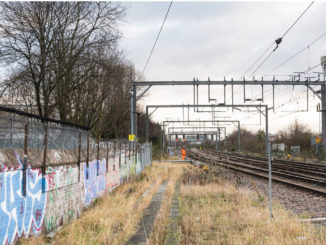The Landscape Institute (LI) supports the government’s emphasis on growth and welcomes its proposals to reform the planning system, provided that all new development is well-designed, constructed, and managed to ensure its sustainability and fitness for future generations to enjoy. In meeting challenging targets for both housing and infrastructure, we should be taking a long-term view of costs and consequences, and ensure that the wider environment is properly valued. Taking a landscape-led approach to both plans and projects can help enable opportunities, avoid unexpected adversities, and provide better value solutions.
Making best use of the land: New construction presents opportunities to embed natural elements and systems that can respond positively to the climate and biodiversity emergencies, and contribute to people’s health and well-being. Land is a finite resource, and our planning system should seek to make best use of it by setting high quality standards, not only for buildings but also for the treatment of spaces between and around them in urban, rural and Green Belt areas.
Strategic planning at landscape scale: Strategic planning at a regional, landscape scale will respond to wider environmental constraints and opportunities to guide and deliver more genuinely sustainable development. Site allocations in plans should include areas for nature restoration as well as construction proposals. National land use planning policies should promote the delivery of multi- functional green infrastructure networks and assets, and establish the principle of all new development contributing to these.
Sustainable development and nature-based solutions: At project level, the planning system (and building regulations) should ensure that all new developments, especially housing, are well-designed and incorporate the best available standards of energy efficiency and climate resilience. Ambitious house-building targets should ensure that new homes are not simply providing accommodation but are attractive, efficient and healthy places in which people can thrive. Amongst other considerations, that means including access for all to green spaces, promoting urban tree management strategies and using nature-based systems to help favourably manage water, microclimates and pollution. To progress this, development at all scales should incorporate a proportionate contribution to ensure green infrastructure quality.
Major infrastructure project management: The LI recognises the need to expedite improvements to our creaking infrastructure, notably in transport, energy, water and drainage. The potential adverse impacts of major schemes, and how these may be avoided or managed, must be properly considered, particularly in view of rural landscapes. However, large-scale developments may also present opportunities and unlock funding for beneficial enhancements beyond operational objectives in terms of better land management, nature recovery and ecosystem services. A more collaborative and holistic approach to project management between government departments and between developers and planning authorities – through early engagement of landscape professionals to develop multi-functional landscapes – could bring dividends in terms of cost, time and the quality of outcomes to benefit people and nature. It may also reduce opposition and enable the swifter delivery of better quality schemes.
Multi-disciplinary skills are needed: The proposal to increase the numbers of public sector planners is welcome, but there is also a real need to invest in a range of new green skills in landscape, ecology and construction to contribute to creating environments that work for people and nature. There is a significant skills shortage in both the delivery and management side of landscape, so we urge the government to positively support and promote the education and training of sector skills at university and college level. We need to manage change with sensitivity and expertise in ways that should meet the needs and wishes of present and future generations. Members of the Landscape Institute look forward to responding to this challenge.
Image Cover Credit: Flickr User Manish Prabhune


